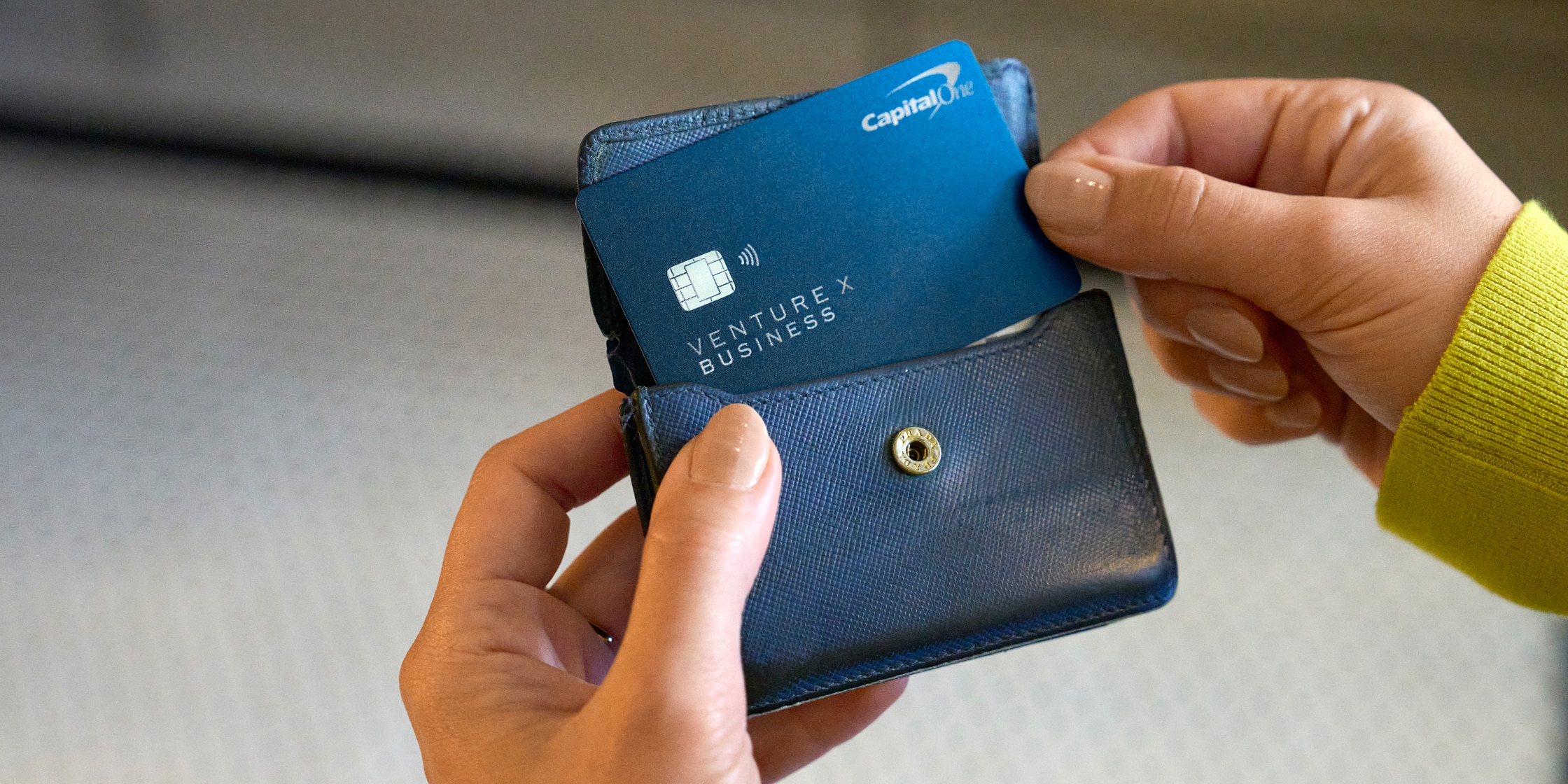Meet Brandon, Bruno and Steven: The men behind Sand Cloud
The founders of the beachwear brand discuss the early days, protecting marine life and how they use Spark Cash Plus cash rewards.
Capital One recently had the pleasure of sitting down with Brandon Leibel, Bruno Aschidamini and Steven Ford, the three founders of popular beachwear lifestyle brand Sand Cloud.
Whether the topic was sourcing Turkish cotton, protecting marine life or the difference between cash back rewards and gift cards, their passion and enthusiasm was infectious. The nearly 1 million followers on their various social media accounts would no doubt agree.
What is Sand Cloud, and how did it begin?
You three have been friends for a long time, and your friendship has become a big part of your lore as a brand. How exactly did you come together and develop this idea?
Brandon Leibel: Steven and I went to college together at San Diego State, and we became roommates senior year. We’d be up late talking about business ideas, what we’re going to do after we graduate—just thinking about entrepreneurial ideas. We graduated in 2012, and we both got a job at an insurance company. And one day we’re at the beach after a day of work, lying on our towels, and I turn to Steven and say, “We should put a pillow in our beach towels.” That was kind of the aha moment.
How old were you when you first got the idea?
Brandon: We were just turning 22. We had no idea how to start a business or a brand. And we were working at this insurance company. That’s where we met Bruno. He was our first customer, actually. He bought the first pillow towel prototype. We didn’t even have a name. We were just trying to figure it out, putting our heads together on how to create a brand and build this product. And one day we’re at the beach having a football catch and Bruno says, “You should call it the Sand Cloud.” That was such a spark.
What happened from there?
Brandon: We moved in together and went to work on creating a brand called Sand Cloud. And pretty soon on this journey building the brand, we realized that the pillow towel wasn’t really the winning idea. It was taking the beach towel and creating a brand around it through colors and patterns, really making a community out of the beach towel category, which hadn’t really been done.
Bruno Aschidamini: We came across these organic Turkish cotton towels. They were really elegant and thin, and they’re woven flat to the sand. It seemed like the perfect product. We had to ask our parents for $3,000 each to get a little money to buy our first round of inventory.
The evolution of Sand Cloud as a business
When importing Turkish cotton, is it difficult to source? Did you experience supply chain issues?
Bruno: When you start dealing with organic material, it does become more difficult to source. You have to preorder everything because it’s not stock material. When we first started ordering towels, we just ordered whatever they had available. But once you start customizing things and you want things that are not off the shelf, it starts getting a little more complex and requires larger volume, bigger numbers to get it done.
With a business like Sand Cloud, where everything is customized, that could get pretty complicated.
Bruno: For example, we wanted to sell a mandala towel. This towel has never been made before. It requires a special loom, and we’re like, how do we get this made? And it turns out you have to order a thousand of them. That’s kind of what really spurred the business. Once we started selling them, we started seeing more revenue. Then we decided to make a tie-dye towel. At that time, tie dye was really trending and all the influencers were posting with tie-dye pictures. We made tie-dye towels and ordered a thousand of those and they sold out. And then we just kept reinvesting the profits into the business.
A big selling point for your towels is that they’re sand-free. Is it true that you sort of found that out by accident?
Bruno: We would take them to the beach and the towels would not have any sand on them. We thought, “Oh man, these towels are so much better than what you can buy off the shelf, and no one’s selling them.” The United States wasn’t really importing Turkish towels in any meaningful volume until we got started.
Steven Ford: Sand Cloud towels are flat-woven. That basically means that compared to traditional terrycloth towels, they don’t have those bigger loops in them, so the sand doesn’t get stuck and trapped in the fibers. We found with the Turkish towels, a huge selling point was the fact that you could just give it a shake and the sand just falls right out. And then combining that with the mission of giving back to marine life, the designs [and] the aesthetic of what we were going for—[it’s] the whole package. That’s what people really gravitated toward.
How Sand Cloud gives back to protect marine life
You mentioned giving back and your commitment to corporate philanthropy. Could you elaborate with an example or two about what you’ve done to uphold that mission?
Bruno: It’s a multipronged approach. It starts with the product itself. When you buy a Sand Cloud towel, it uses 50% less cotton than a regular beach towel. That means 50% less water to grow the cotton. You can fit twice as many in a container, so half the amount of CO2 to transport it to the United States. The second part is that it’s sand-repellent, so it doesn’t erode our beaches. Beyond that, we partner with about 20 different nonprofits that support marine life in different ways.
How do you decide which nonprofits to help?
Bruno: We try to hit every part of the marine life chain. Some nonprofits we work with are focused on beach cleanups, picking up cigarette butts and trash. They’re the first responders, basically. And then other nonprofits, their entire focus is working legislatively to create more protected marine life areas—ocean sanctuaries where you can’t fish, drill. Another area is education. Some nonprofits we work with, they’re going to schools, they’re doing presentations, they’re educating our younger generations on the benefits of preserving marine life. The beach is just a special place for us. We want to protect it and keep it clean and pristine.
Determining the best way to use Spark Cash Plus cash back rewards for your business
Switching focus, you’ve been users of the Capital One Spark Cash Plus card for years now. How have the rewards helped your business?
Steven: For us, the Spark Cash Plus card has been a huge component of building the business, just taking advantage of those rewards. Two percent cash back is generous. It’s a generous amount. Two percent is a good number.
It certainly is.
Steven: The fact that we get the 2% cash back, we’re able to invest it, whether it’s for team trips and bringing remote employees together or investing in new product development, new categories. All these things require a lot of up-front costs. One of the ways that we look at the rewards is it’s enabling us to take more risk in these other areas.
Bruno: The rewards are great for smaller expenses as well. For example, in our store in Pacific Beach, California, we have a snack center in the back, where we use our reward points to buy snacks and fruits and food for the employees. It’s a way to make sure that our employees are well fed and happy. And it turns out that it’s one thing they love the most, picking out the snacks every month.
Absolutely! Nothing helps morale like snacks. How many employees do you have right now?
Bruno: We have 30.
There are a lot of business owners who are unaware of the breadth of what rewards could do. What kind of advice would you give them to help them make these cards work harder for them?
Bruno: One of the things we really like about Capital One is that a lot of other credit card companies tie their rewards to gift cards. And gift cards are limited. For example, if you want to invest in a store or new fabrics, or donations to nonprofits, you can’t really do that with a gift card. Cash back gives you the flexibility to grow the business the way you want to grow it.
Learn about more Spark Cash Plus business card features and benefits
-
Unlimited 2% cash back. Spark Cash Plus cardholders earn unlimited 2% cash back on every purchase, everywhere—with no limits or category restrictions.
-
Attractive welcome offers. Right now you can earn $4,000 or more in cash bonuses and $2,000 when you spend $30,000 in the first 3 months. Plus, earn an additional $2,000 for every $500,000 spent in the first year, which can be a great way to supercharge your first-year rewards.
-
Big purchasing power. Spark Cash Plus gives you big purchasing power with no preset spending limit so you can spend more and earn more rewards.1 It adjusts to your needs based on your spending behavior, payment history and credit profile.
-
An annual fee you can earn back. With Spark Cash Plus, earning rewards is simple and effortless. Even better, the $150 annual fee is refundable when you spend at least $150,000 annually, giving business owners the opportunity to enjoy this premium card at no additional cost.


